
by Rachel Clarke and Claudia Hart
The body has been the place within digital culture where the line between virtual and physical reality has been drawn, a contemporary version of the idea of a Cartesian mind-body split. In digital culture, the corporeal body is contrasted with the virtual/technological one, manifesting in the cyborg; the body/machine being first posited by Donna Haraway1 within the context of first wave feminism. The cyborgian idea was thought of in many ways as a liberation from the constraints of gender identification.
Akin to the cyborg is the post-human being, one that is beyond a single physical identity. Like the cyborg, the post-human is both physical being and machine, but a dystopic one not imagined as a liberation as Haraway thought of the cyborg. This hybrid human references the automaton. In post-photographic 3D cinema this means using stock digital bodies loaded with stock animation. Such generic, anatomically accurate humanoid bodies can be easily culled from digital libraries found online, or from popular low-cost character development software programs such as Poser™.
Preset naturalistic animation sequences - character walk cycles, stair climbing, dancing, exercising - can also be loaded into these generic bodies and then imported into a virtual environment, creating a 21st century choreographic version of the synthesized animated collage prevalent in earlier experimental filmmaking. Virtual collaging permits bodies, objects, and spaces to be re-deployed, recontextualized and juxtaposed in infinitely recombinant variations, just as fragments of externally referenced meaning in clippings from newspapers and magazines were used by Picasso and Braque in the early 20th century. Choreographed motion scenarios made from found movements use techniques that permit the dissociated feeling of pasted-together collage, lending characters an erie unnatural / yet natural feeling.
This is only one way of animating a digital body. Real-world motions can also be captured by hacking popular 3D computer games. Tutorials widely distributed on the Internet teach users to adapt popular games like the x-Box Kinect, a motion sensing input device used to track the movement of objects and individuals in three dimensional space. This hack also allows individuals to capture motion, insert it into character models, and then edit it to create narratives or some other variety of digital performance. Naturalistic human motion can therefore be reformulated by using techniques native to the art of computerized choreographic collage: copying, pasting and repeating actions to create patterns, loops, and scratches, endowing motion sequences with a robotic, automated sense despite its using captured, naturalistic movement as its starting point. The result is a cinematic representation of the human that is somehow realistic and yet completely artificial, both real and unreal at the same time.
Both the cyborg and the post-human idea of a cinematic character have evolved in relation to the idea of an avatar. Avatars are virtual "costumes" worn on-line, personalized synthetic bodies often adopted on the internet. The rich manifestations of avatars in post-photographic simulations are the hyper-real beings that convince the viewer of their flesh and substance, obfuscating the corporeal/virtual body split, and blurring the edge between a representation and the real. They explore a plastic territory or "synthetic corporeality" that freely traverses between physical and virtual references to body, representing a fluidity of the self that reflects contemporary psychological paradigms.
This hybridization is not unique in the history of art. Both the cyborg and the post-human can be contextualized within the art history of the grotesque. Standing outside of known categories - of gender or otherwise - a digital body is monstrous, blending and merging things impossible in the real world outside the realm of high-tech surgery. It permits the hybridization of the animal or vegetable with the human, as well as the machine with the human, symbols of the unconscious and the imaginary which were actually first glimpsed in the marginalia of medieval manuscripts and Gothic architecture.
1. Donna Haraway, "A Cyborg Manifesto: Science, Technology, and Socialist-Feminism in the Late Twentieth Century," in Simians, Cyborgs and Women: The Reinvention of Nature (New York; Routledge, 1991)
Laturbo Avedon
Living Room Light Exchange Talk - December 15, 2015
Sean Capone
A WORD HEAP -- S(pam) H(allucination) E-Mails, 2015
Jose Carlos Casado
newbody.v01e, 2001/2004
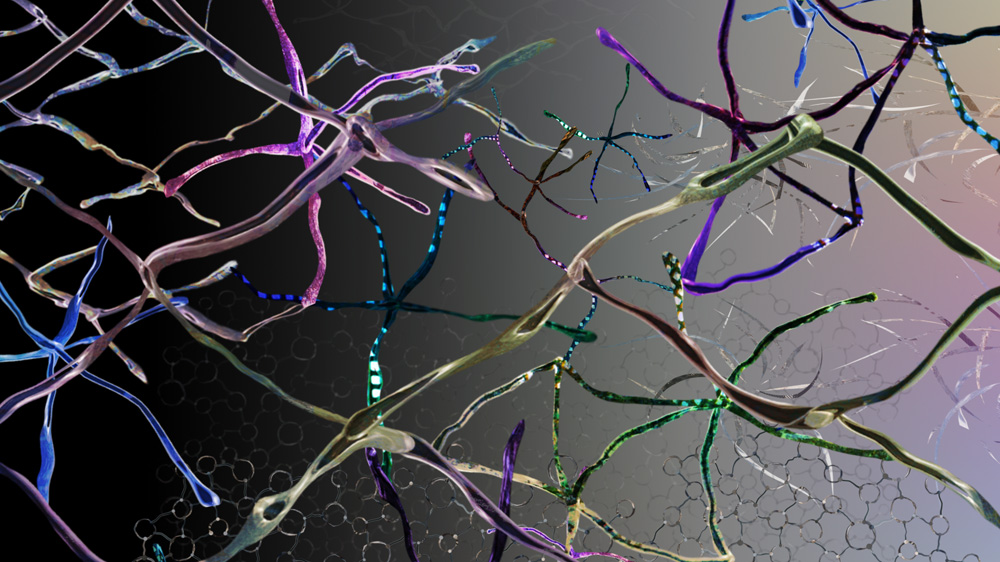
Rachel Clarke
Plexus, 2012
HD video, stereo sound
http://rachelclarke.net/
Gero Doll
Advanced Truth, 2014
Ryan Whittier Hale
Cluster, 2010
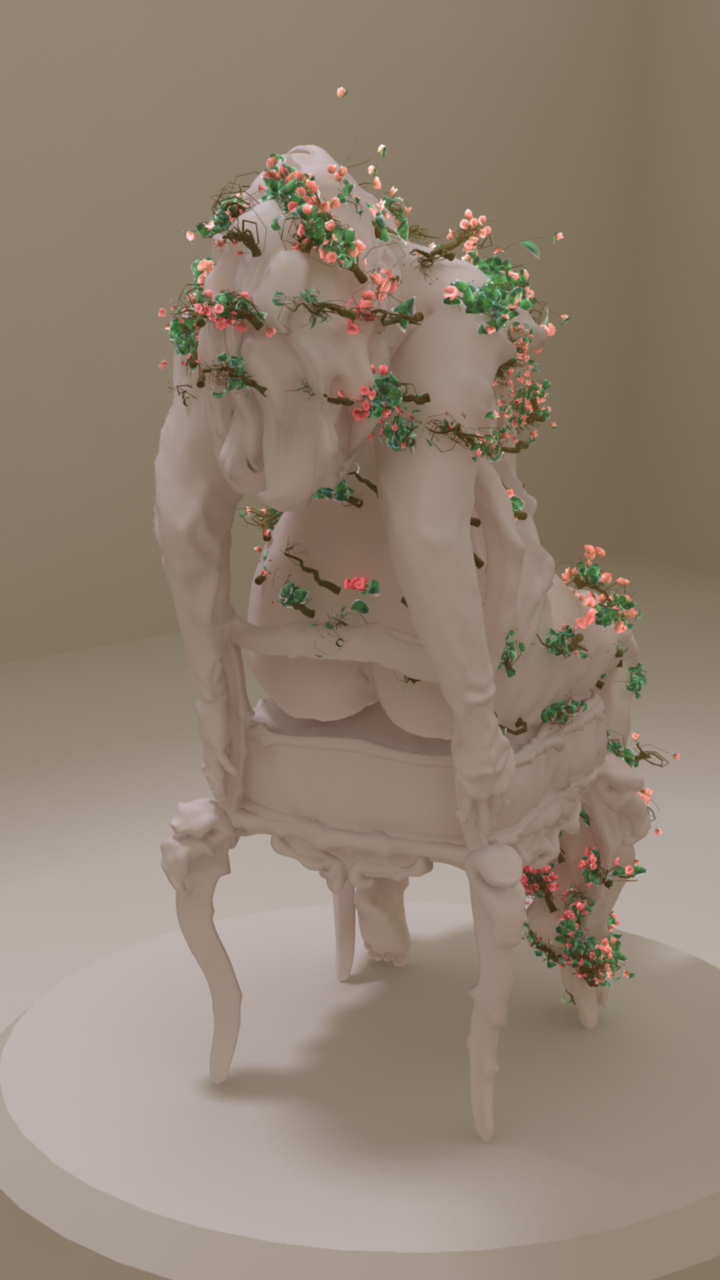
Claudia Hart
The Seasons, 2009
HD video with stereo sound
In The Seasons, a seated woman in a pose of erotic abandon cycles clockwise on a rotating pedestal. As she cycles, she decomposes, a vine of roses surrounding her, blooming and then fading away. The room also revolves, though counter clockwise, while the animation camera pans back and forth. These movements function in counterpoint, to appear only on the edge of perception. Sound for the piece is of crumbling paper. The color scheme is white on white.
http://www.claudiahart.com/
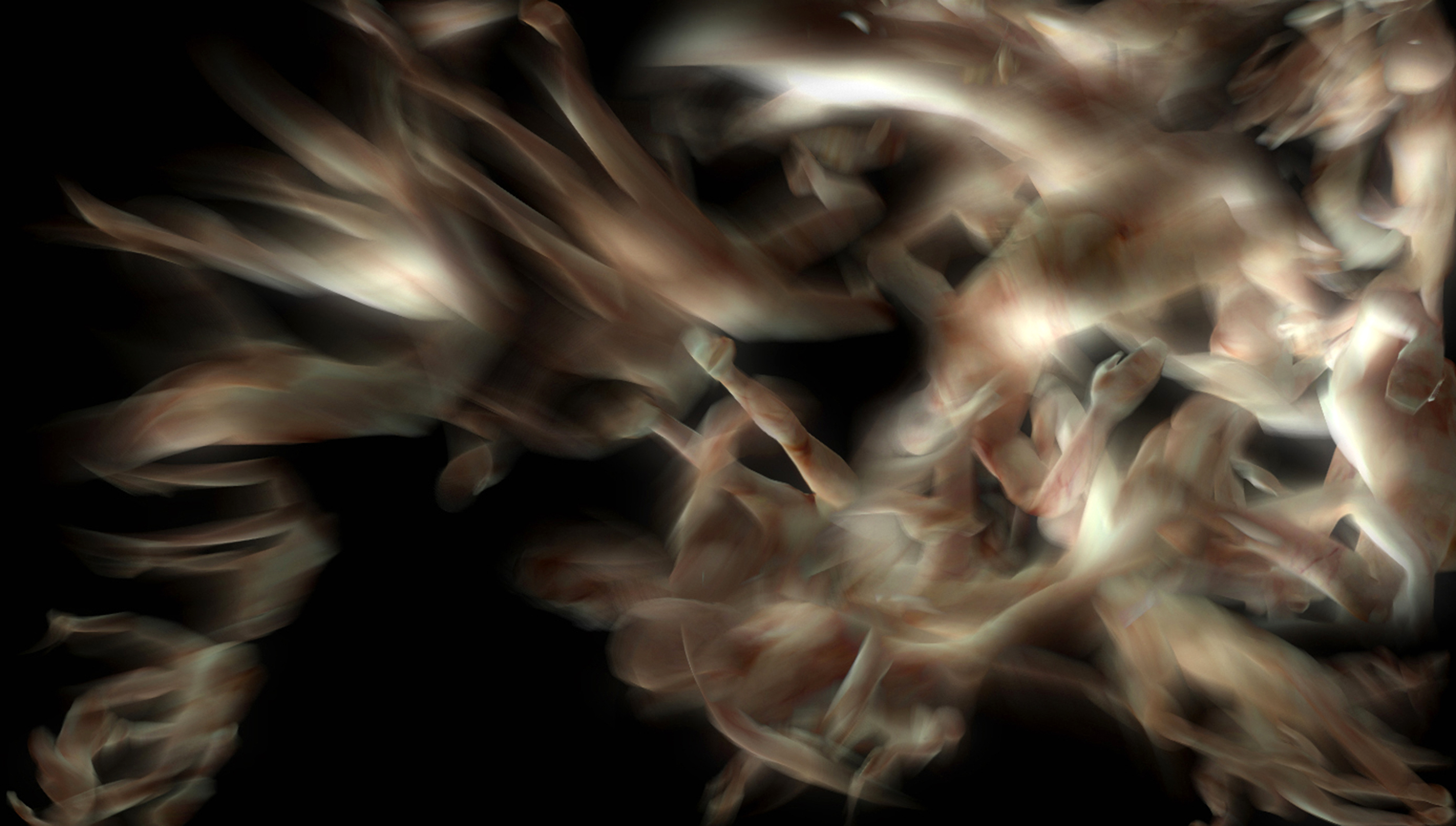
Kurt Hentschlager
Cluster
Generative, Audiovisual Installation & Live
Performance, 2009-2012 Single 16:9 Screen, 4.1 sound
CLUSTER, part of Kurt Hentschla?ger's generative 3D animation and sound work, is looking into group behavior and -interaction, and building on swarm phenomena. In the weightless choreography of CLUSTER human figures appear mostly as anonymous particles, as a pulsing, amorphous mass, a cloud of blurry matter from body parts and light. The work is visually fluctuating between realistic and abstract forms.
By its generative nature never fully predictable, CLUSTER describes a meta- organism with decidedly anti-individualistic character. While the 3D characters are of human form, most of their behavior is not.
Sonically, the work draws from both repetitive elements, as well as from "natural" improvised structures. All sound in CLUSTER is created by the events driving the work - swarm motion and behavior as well as changes in light and color. Each 3D character acts as one voice in an abstract choir, together rendering a pulsing and dynamically transforming drone soundscape.
CLUSTER, over time, goes through various stages, often resembling an actual humanoid cluster, packed tightly, spinning and tumbling through space, bodies glued together by ever shifting gravity and kinetic forces.
© Kurt Hentschlager
Sophie Kahn and Lisa Parra
Body/Traces, 2009
Body/Traces is a digital stop-motion 3d animation composed of thousands of 3d laser scans, made with a DIY laser scanner made from LEGO. It is designed to be shown projected in a darkened room for a small number of visitors, with the dancer at life-size and the video on a continuous loop.
Co-directors: Sophie Kahn and Lisa Parra
Choreographer: Lisa Parra
New media artist: Sophie Kahn
Dancers: Lisa Parra and Tina Vasquez
Sound: Sawako Kato
Editor: Lisa Parra
Alex Lee
Soliloquy for Sagan, 2015
Dialogue for Soliloquy for Sagan is taken from ‘The Varieties of Scientific Experience” by Carl Sagan. Selected passages focus on the poetic and noblest aspects of his writing. Sound effects are taken from recordings of space taken by Voyager I and Voyager II space missions – a program heralded by Sagan. Soliloquy for Sagan is conceived as a homage to Sagan and the message he gave about humanity’s place within the Cosmos.
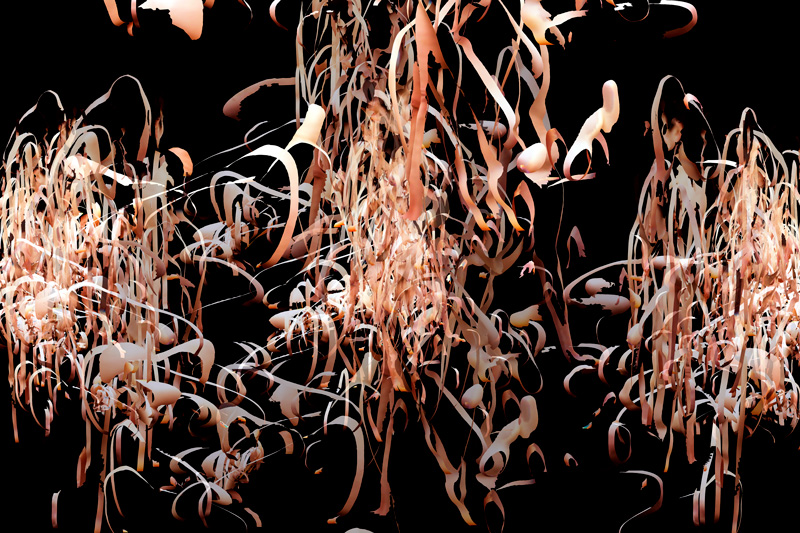
Locurto-Outcault
thinskinned[l8], 2004
pigment print, 24” x 36”
Lilla LoCurto and Bill Outcault
Working with the three-dimensional scanner as a camera, we’ve developed different software programs that allow us to deconstruct the three-dimensional body and to produce animations by manipulating the figures and their relationship to the cameras. Points of continuing fascination for us are the ability, within the computer, to not only work with the figure sculpturally but also to manipulate the viewpoint of the camera. Images captured with a traditional camera are limited to a single viewpoint, fixing the photographic eye in time, whereas with three-dimensional imagery the camera essentially surrounds the subject, allowing a unique simultaneity. We continue to explore this omni directional quality of the three-dimensional photographic images, using the unlimited number of viewpoints derived from a single scan to place the viewer outside the frame of traditional lens-based perspectival vision. In thinskinned, instants from animations are revisited and compiled from numerous viewpoints, capturing a single moment from multiple angles.
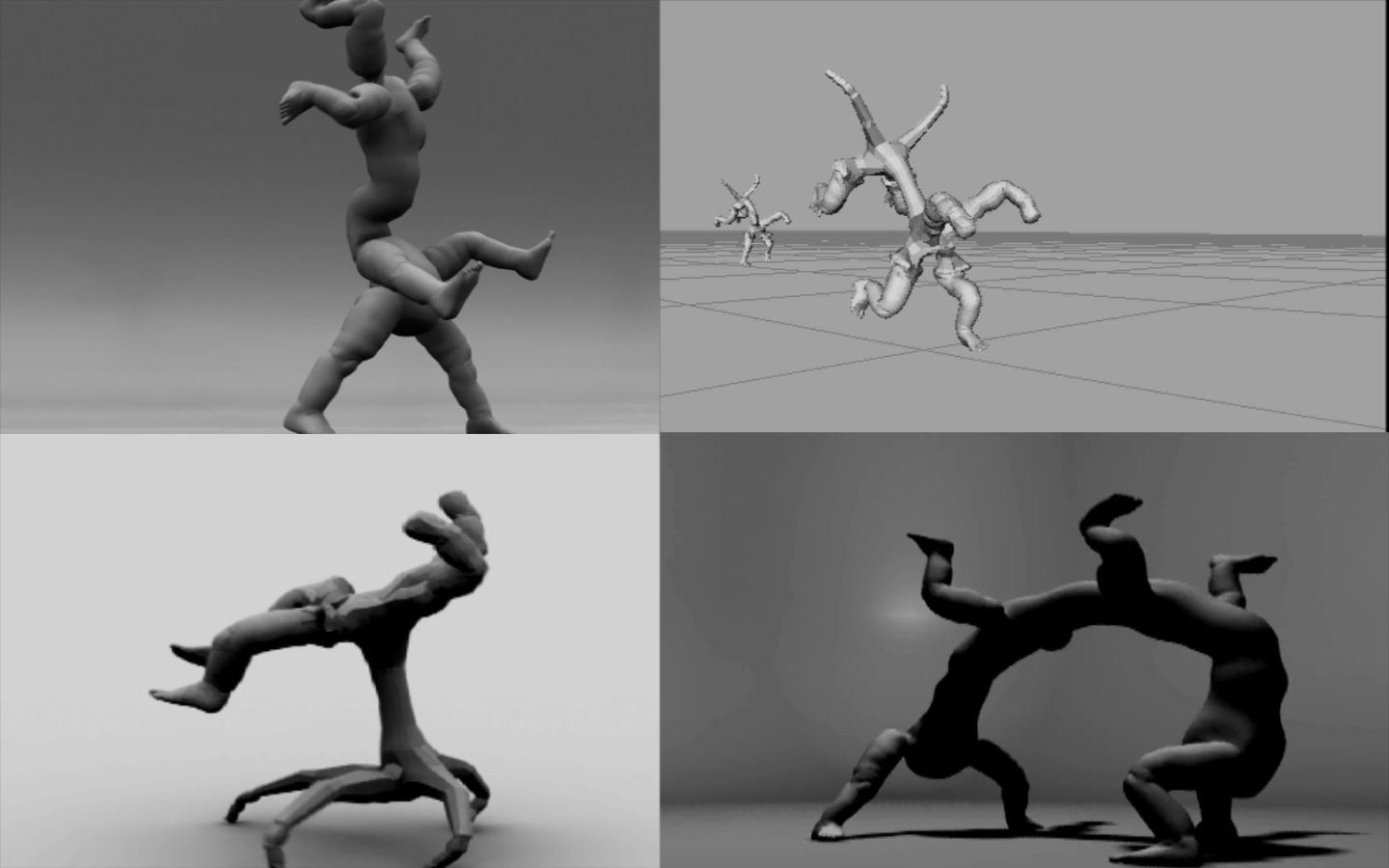
Michael Rees
Putto 2x2x4, 2011
Video
My focus is not on the techniques or technologies but to get at the larger sense of life. Mostly our lives are mediated by the structure and culture we inhabit. It is difficult to see things directly or authentically. Many of the experiences we have are designed for us, even though we experience them as individual and idiosyncratic. My desire to use all these media is a way to point outside of this mediated experience to a fecund and creative space that is generative. Perhaps it gives a little bit of that diffuse map that I referred to before. The purpose of the work is uncanny; to give the feeling of something that is known and to point to that which is not known or to that which is strange. It is this sense of the uncanny that suggests new possibilities. It is the generative aspect of my pataphysical sculptural practice.
http://www.michaelrees.com/
Pat Reynolds
Circulation 3, 2016
Benjamin Rosenthal
Impenetrable as Night, 2016
Impenetrable as Night takes inspiration from the landscape of northern Iceland as virtual site for a demented tactical and techno-spiritual training camp. Mountain-like structures in the fjord reveal themselves to be hybrids of bunker and landscape. Animated figures perform actions that queer the line between worship, ritual violence and the erotic. The iconic icelandic “hot tubs” become potential sites for some sort of sinister training activity or violent ritual. The virtuality of the space is revealed consciously via the inclusion (and revelation) of the 3D wireframe, the visible glitch, the use of real- time rendering of individual frames screen-recorded from Maya, and puncturing and layering of spaces that don’t conform to conventions of believable 3D space.
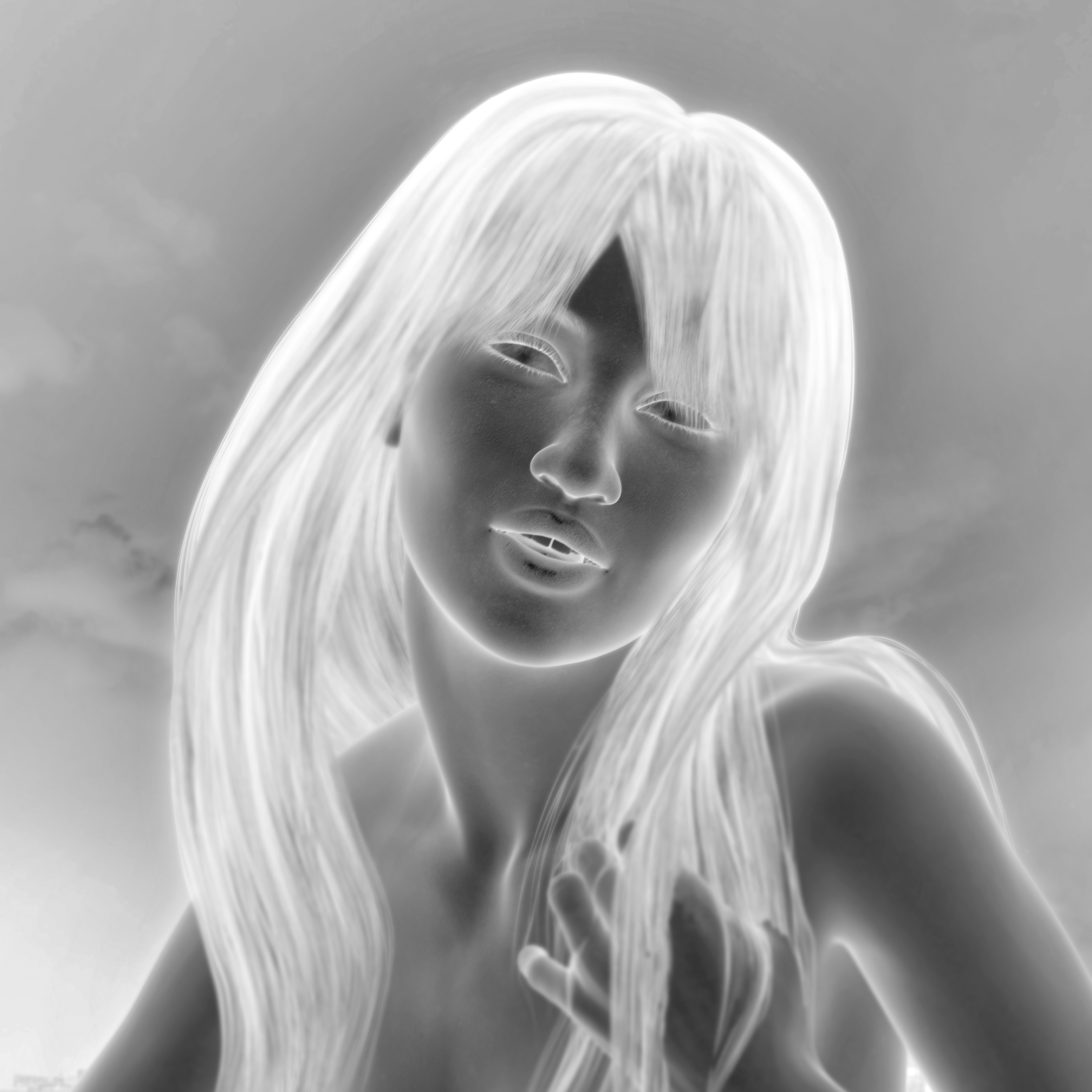
Martin Sampedro
HR 002 Gala-Selfie, 2015
http://www.martinsampedro.com/
Frank Yefeng Wang
The Drifting Stages, 2016
The Drifting Stages is a series of Experimental CGI video installation. The animations of the project depict dramatic virtual environments that suggest my memory of different spaces I have lived in the United States during the past eight years. These virtual stages look broken and absurd, although most of them derive from my physical experience shared with these places.
I have been moving averagely once a year after I came to the United States. The more and more obscure notion of “home”, as well as the feeling of the on-going instability as a Chinese living and working in the Western world is profoundly embedded in my body, and being transferred to my works. I started creating these virtual environments with an attempt to reflect my rational surroundings over the last eight years with my collective memories, but the outcomes of the depiction are always fragments of irrational structures, innocent but struggling characters, and grotesque props, accompanied with some cuteness and a note of pessimism.
The images contain many things I have collected “un-intentionally”, such as the products bought from big retail stores (e.g. furniture from Ikea or kitchenware from Bed Bath & Beyond, etc.) Many of these mass- produced “collectibles” give me the contradictory but juxtaposed feeling of convenience and fear, as they are evidence not only of my continuous relocation, but also the overheated society. I come to a realization that perhaps the images of this series of artwork show our predicament of living in this over-speeding world where irrational results are produced by the supposedly rational system and decisions, and our constant failure of the attempt to escape from it.
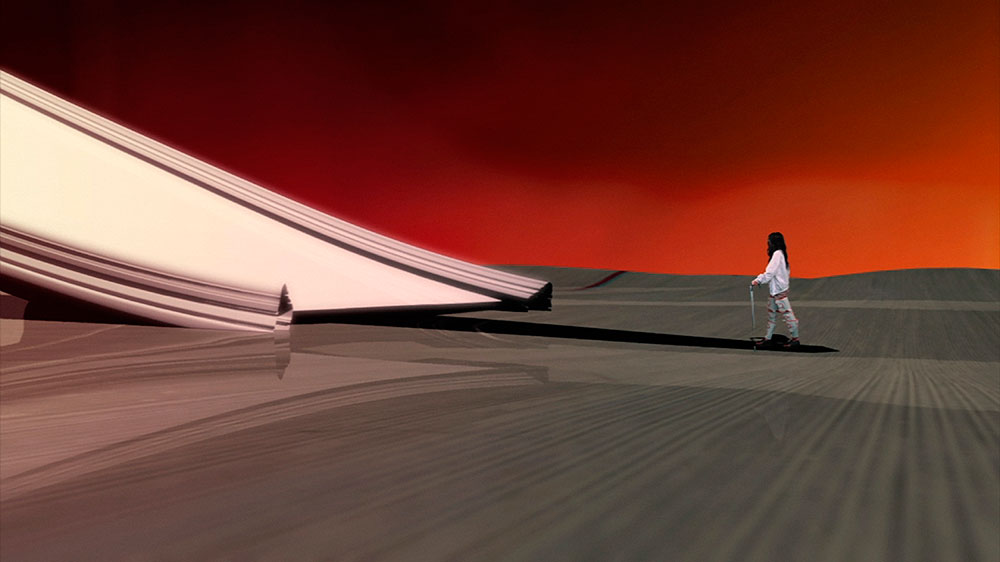
Yemenwed
Episode 3, 2008
HD video, stereo sound
http://www.yemenwed.com/
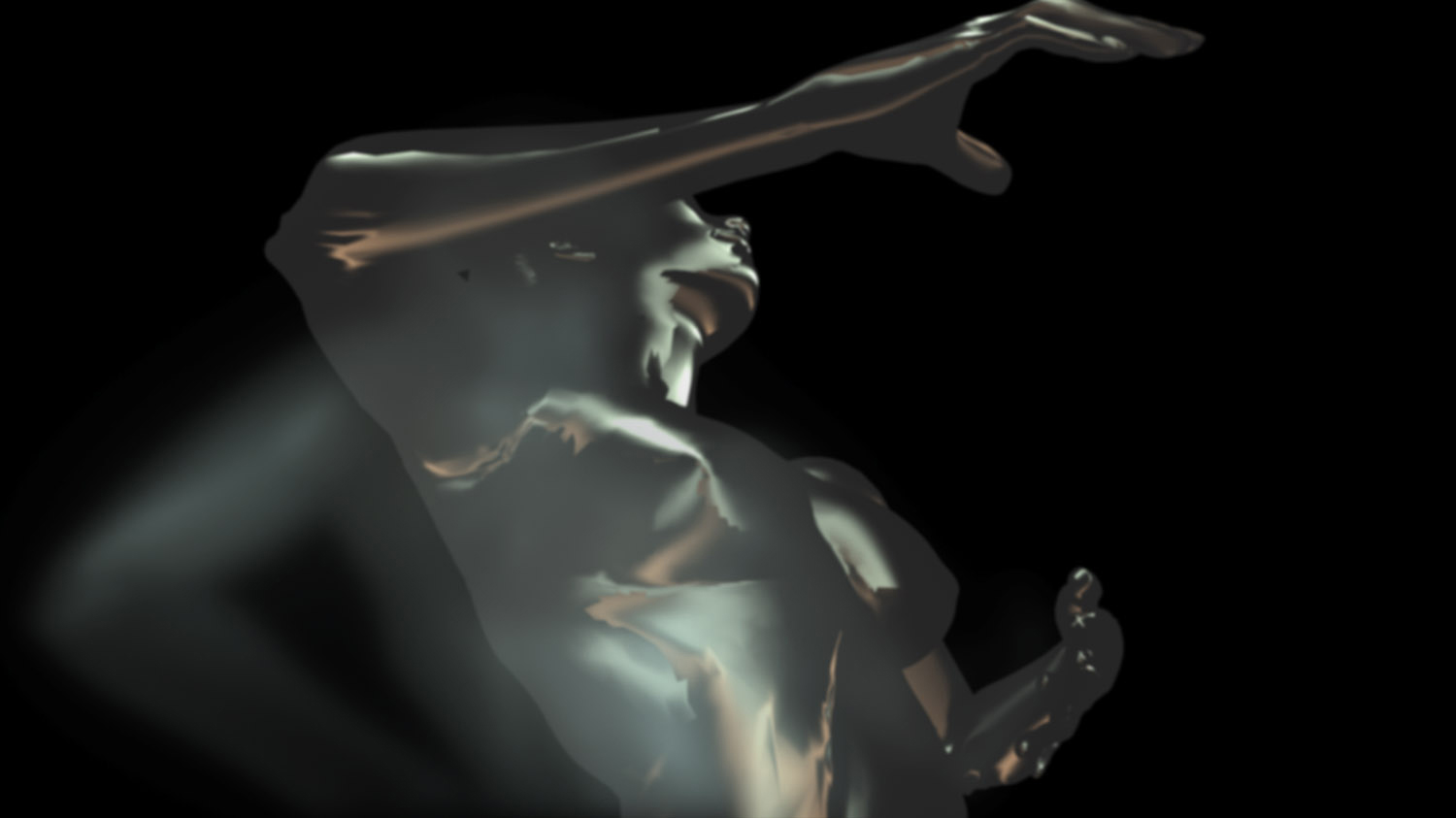
Katrina Zimmerman
Corpus Callosum, 2009























